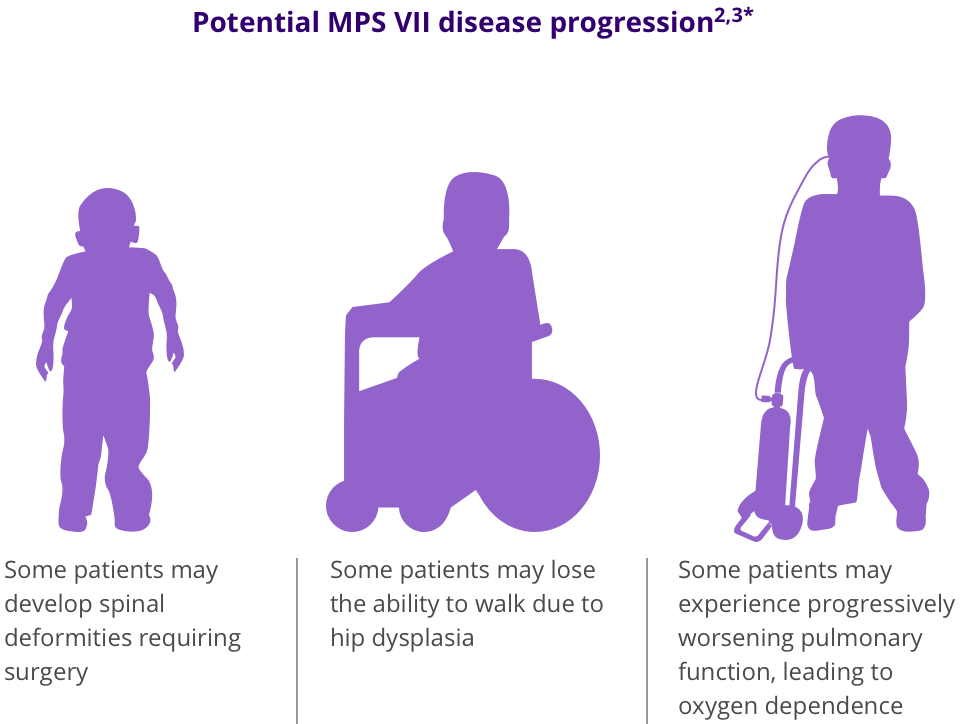

GAGs are classified by their different core disaccharide structures into dermatan sulfate (DS), heparan sulfate (HS), keratan sulfate (KS), and chondroitin sulfate (CS). GAGs are ubiquitously present in the connective tissue and play important roles in cell growth and proliferation, cell surface binding, and histamine storage. Mucopolysaccharidoses (MPS) are rare, heterogeneous group of lysosomal storage disorders caused by a deficiency of various catalyzing enzymes that break down polysaccharides, called glycosaminoglycans (GAGs). Proper rehabilitation therapy, including physical and occupational therapy, surgical intervention, or medications, can benefit patients with uncontrolled musculoskeletal, respiratory, ophthalmological, and neurological manifestations. Considering new drugs are still in clinical stage, disease management with close monitoring and supportive/palliative therapy is of great importance for the time being. Several clinical studies on gene therapy reveal that delivering genes directly into the brain achieves better results than intravenous administration in patients with neurological symptoms. Gene therapy has the potential to “cure” the disease with a one-time treatment rather than just alleviate symptoms, which makes it an attractive treatment strategy. BBB-penetrable-ERT is being studied comprehensively in the hopes of being used in the near future as a method to effectively control CNS symptoms. Novel therapies, including BBB-penetrable-ERT, gene therapy, and substrate reduction therapy, are under development to control currently unmanageable manifestations. In addition, several factors such as transplant age limits or graft-versus-host disease in HSCT have limited its application for patients. However, it is ineffective in MPS II, which can be explained by the relatively late diagnosis. HSCT, another treatment method, is effective in controlling the CNS symptoms and hence has been adopted as the standard treatment for severe types of MPS I. Additionally, life-long treatment burdens and immunogenicity restriction are unintended consequences of ERT application. ERT increases life expectancy and alleviates some of the somatic symptoms, but musculoskeletal, ophthalmological, and central nervous system (CNS) manifestations are not controlled. Natural history of MPS I and MPS II shows that somatic and neurological symptoms occur earlier in severe forms of MPS I than in MPS II. In addition, multiple disease management strategies for the uncontrollable manifestations of MPS I and MPS II to improve patients’ quality of life are presented. This review is aimed at providing a comprehensive evaluation of the pros and cons of HSCT and ERT, as well as an up-to-date knowledge of new drugs under development. Hematopoietic stem cell therapy (HSCT) and intravenous enzyme replacement therapy (ERT) have had a significant impact on the treatment and comprehension of disease. MPS I and MPS II exhibit both somatic and neurological symptoms with a relatively high disease incidence.

Mucopolysaccharidoses (MPS) are group of inherited lysosomal storage diseases caused by mutations of enzymes involved in catalyzing different glycosaminoglycans (GAGs).


 0 kommentar(er)
0 kommentar(er)
